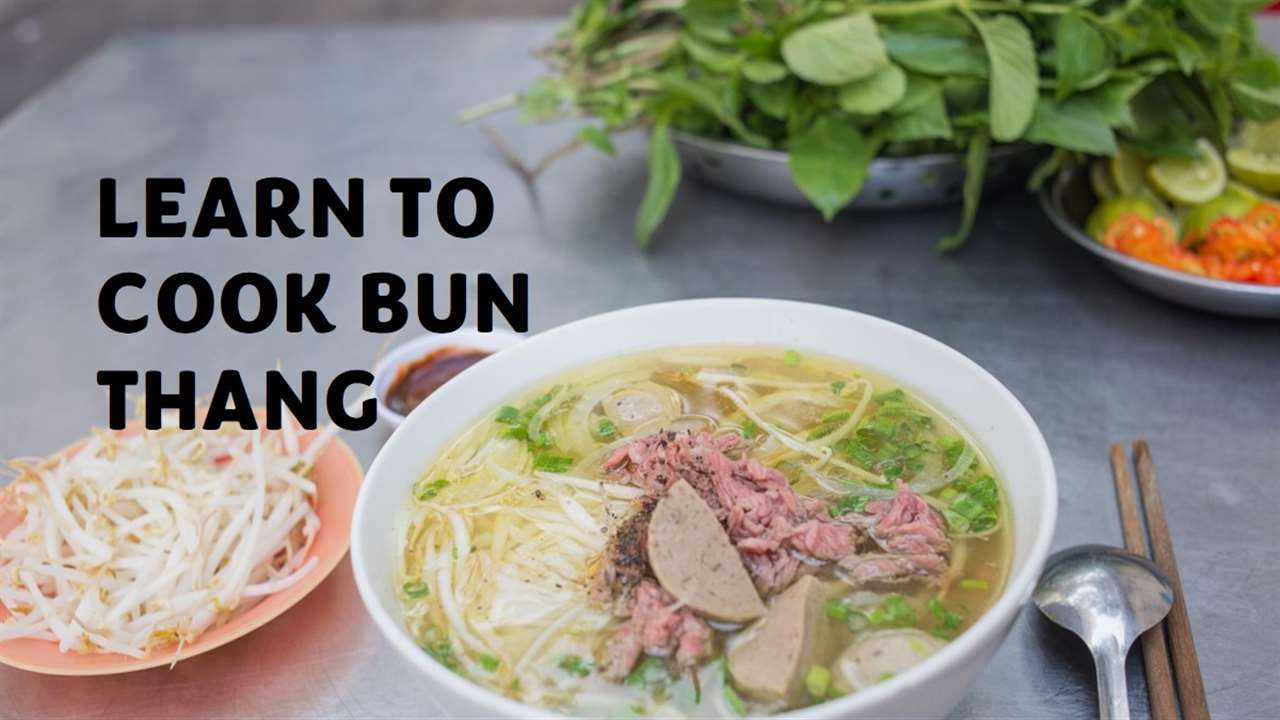Are you ready to embark on a culinary journey to Vietnam? If you’re a fan of Vietnamese cuisine or simply looking to explore new flavors, you’re in for a treat. In this article, we’ll delve into the delightful world of Bun Thang Recipe, a traditional Vietnamese dish that’s bursting with flavors and textures. From its rich history to step-by-step instructions on how to prepare it at home, we’ve got you covered. So, put on your apron and get ready to tantalize your taste buds with this mouthwatering delicacy.
Unraveling the History of Bun Thang
Before we dive into the kitchen, let’s take a moment to appreciate the history behind Bun Thang. Originating from Hanoi, the capital city of Vietnam, this dish is deeply rooted in Vietnamese culinary tradition. It is believed to have been created during the imperial era, where it was served in the royal court as a symbol of sophistication and elegance.
The name “Bun Thang” itself holds significance, with “Bun” referring to the thin rice vermicelli noodles used in the dish, and “Thang” representing the act of floating or skimming, referring to the delicate method of cooking the egg mixture. Over the years, Bun Thang has evolved from a dish reserved for special occasions to a beloved comfort food enjoyed by people across Vietnam and beyond.
Ingredients: The Building Blocks of Flavor
Now that we’ve explored the cultural background of Bun Thang, let’s move on to the star of the show: the ingredients. Like many Vietnamese dishes, Bun Thang boasts a harmonious blend of flavors and textures, achieved through a diverse array of components. Here’s what you’ll need to recreate this culinary masterpiece at home:
For the Broth:
- Chicken bones or carcass
- Water
- Shallots
- Ginger
- Fish sauce
- Salt
- Sugar
For the Toppings:
- Cooked chicken breast
- Shrimp
- Thinly sliced pork belly
- Dried shiitake mushrooms
- Eggs
- Shrimp paste (optional)
- Vietnamese coriander (rau răm)
- Green onions
- Cilantro
- Bean sprouts
- Lime wedges
Cooking Instructions: Bringing Bun Thang to Life
Now that you have all your ingredients assembled, it’s time to roll up your sleeves and start cooking. Follow these step-by-step instructions to create a bowl of Bun Thang that will transport you to the bustling streets of Hanoi:
- Prepare the Broth: In a large pot, combine the chicken bones or carcass with water, shallots, ginger, fish sauce, salt, and sugar. Bring to a boil, then reduce the heat and let simmer for at least an hour to allow the flavors to meld together.
- Prepare the Toppings: While the broth is simmering, prepare the toppings. Thinly slice the cooked chicken breast, shrimp, and pork belly. Soak the dried shiitake mushrooms in hot water until softened, then slice them thinly. Beat the eggs and cook them into a thin omelette, then roll it up and slice it into thin strips.
- Assemble the Bowl: Cook the rice vermicelli noodles according to the package instructions. Once cooked, divide the noodles among serving bowls. Arrange the cooked chicken breast, shrimp, pork belly, and sliced mushrooms on top of the noodles.
- Add the Egg Mixture: In a separate pot, bring a small amount of broth to a gentle simmer. Slowly pour in the beaten eggs, stirring gently to create delicate ribbons. Once the eggs are cooked, ladle the mixture over the toppings in each bowl.
- Final Touches: Garnish each bowl of Bun Thang with a sprinkle of chopped green onions, cilantro, and Vietnamese coriander. Serve hot with a side of bean sprouts, lime wedges, and shrimp paste for added flavor.
Conclusion: A Culinary Adventure Awaits
In conclusion, Bun Thang is more than just a dish – it’s a celebration of Vietnamese culture and culinary craftsmanship. With its delicate flavors and vibrant presentation, it’s no wonder that this soup has captured the hearts (and stomachs) of food enthusiasts worldwide. So why not try your hand at making Bun Thang at home? Whether you’re cooking for yourself or sharing it with loved ones, it’s sure to be a memorable experience that will transport you to the bustling streets of Hanoi with every spoonful.
For more ideas, recipes, and cooking tips and tricks, please visit us at Lime Chicken.
FAQs About Bun Thang Recipe
1. Can I customize the toppings in Bun Thang?
Absolutely! While traditional Bun Thang includes chicken, shrimp, and pork belly, feel free to get creative and add your favorite ingredients to suit your taste preferences.
2. Is Bun Thang difficult to make?
While Bun Thang may seem complex due to its diverse array of ingredients, the cooking process itself is relatively straightforward. With a bit of patience and attention to detail, you can create a delicious bowl of Bun Thang right in your own kitchen.
3. Can I make a vegetarian version of Bun Thang?
Certainly! You can easily adapt the recipe to create a vegetarian version of Bun Thang by omitting the meat and using vegetable broth instead. You can also add tofu or other plant-based protein sources to enhance the flavor and texture of the dish.
4. What should I serve with Bun Thang?
Bun Thang is typically served with a side of fresh herbs, bean sprouts, lime wedges, and shrimp paste. These accompaniments add additional layers of flavor and freshness to the dish.
5. Can I make Bun Thang in advance?
While it’s best to enjoy Bun Thang fresh, you can prepare the broth and toppings in advance and assemble the bowls just before serving. This allows you to save time without compromising on flavor.

